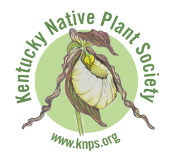The KNPS Wildflower Week 2025 Botany Blitz begins on Saturday, April 5th. Running through Sunday, April 13th, the Botany Blitz is an effort to document as many plant species as possible within Kentucky during the week preceding Wildflower Weekend.
This is the fifth year for our spring wildflower-focused Botany Blitz, which is hosted on the community science website iNaturalist. Using either the iNaturalist mobile app or website, participants upload photos of budding and blooming plants they observe in local parks, state parks, wildlife sanctuaries, and nature preserves across the state. Like many other plant identification apps, iNaturalist analyzes the visual information in photos and offers identification suggestions. But unlike other AI-based apps, the iNaturalist website is also a robust community of people, from new nature enthusiasts to experienced naturalists and expert biologists. The observations you make can be reviewed by the community, and the identifications you select can be confirmed or corrected by other members.
We encourage anyone interested to sign up for an iNaturalist account if you’re not already a user, and to make sure your observations get counted in this year’s blitz, join the Botany Blitz 2025 project (just click “Join” in the top right corner of the project page), and download the mobile app for iPhone or Android. Then get out and look for native plants in parks and other natural areas in your part of KY and make your observations. If you’re new to the platform, check out this helpful Getting Started guide, and browse the observations made by Botany Blitz participants in 2021, 2022, 2023, and 2024.




